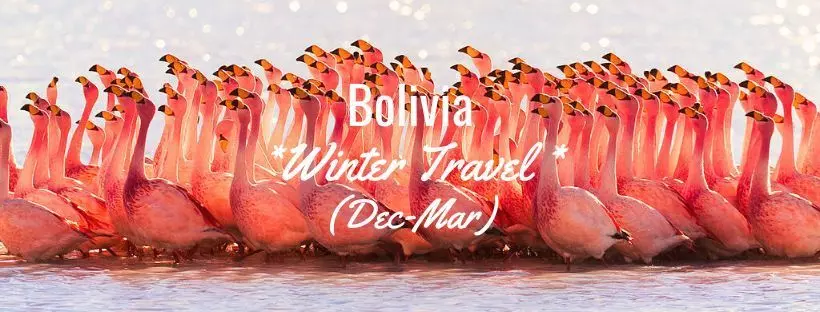
Traveling to Bolivia during Northern Hemisphere's winter season (December, January, February) can be a mixed experience due to varying weather conditions across the country during this period.
Winter Time in Bolivia – Explore Andean Wonders During Northern Hemisphere Winter
While it’s winter in the Northern Hemisphere, Bolivia enjoys its dry season (May to October), but December to February in Bolivia is the wet season with lush landscapes especially in the Amazon and lowlands. For travelers looking to escape cold winters, Bolivia offers vibrant culture and warm spots like Santa Cruz, along with cooler highland adventures. Latin Discoveries crafts tours that balance comfortable weather and unforgettable experiences even in this season.
December to March is summer in Bolivia and also the rainy season in many regions. In the lowlands and Amazon rainforest areas, such as Rurrenabaque and the Madidi National Park, heavy rainfall is common. This can lead to muddy trails, limited access to certain areas, and an increased presence of mosquitoes. However, the rain also brings lush vegetation and vibrant wildlife, making it a unique time for exploring the Amazon.
In the highlands of Bolivia, which include popular destinations like La Paz, Uyuni Salt Flats, and Lake Titicaca, the weather can be more unpredictable. The rainy season can bring afternoon showers and occasional thunderstorms. While this might affect outdoor activities, such as hiking or salt flat tours, the landscapes can be beautifully green, and you may encounter fewer tourists compared to the dry season.
It's important to note that the rainy season can also result in landslides or road closures, especially in mountainous areas. This can potentially impact transportation and access to certain regions.
If you plan to visit Bolivia for outdoor adventures, such as trekking or salt flat tours, it's advisable to check weather conditions and local advisories before making your travel plans. Additionally, packing appropriate gear like raincoats, waterproof footwear, and insect repellent is essential.
In summary, traveling to Bolivia between December and March has its pros and cons. While you may experience rain and encounter some limitations, you can also enjoy lush landscapes, fewer crowds, and unique opportunities to explore the country's diverse ecosystems. Proper planning and flexibility with your itinerary can help ensure a rewarding trip.
Start designing the trip of your dream: get in touch with your Bolivia Travel Expert now!